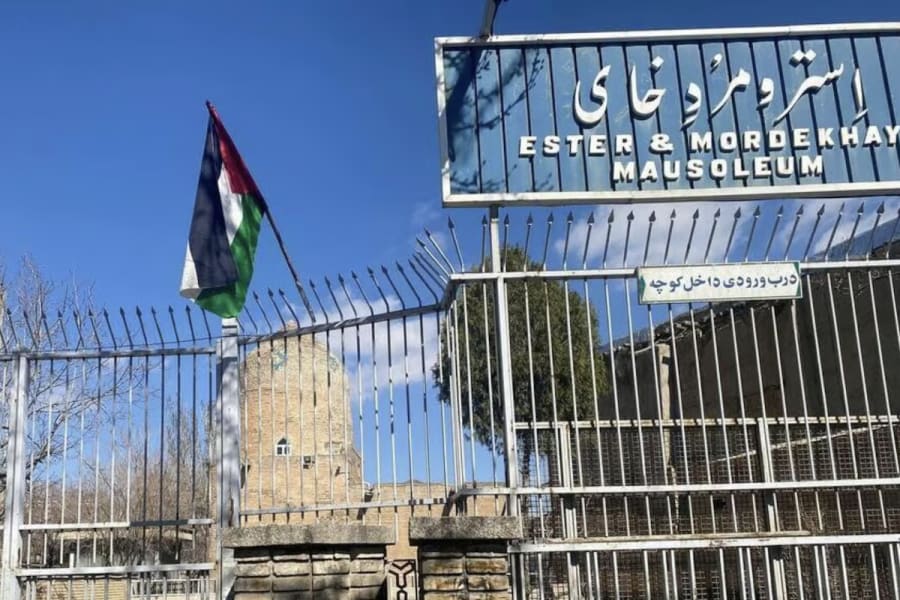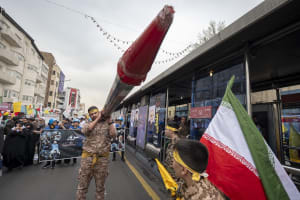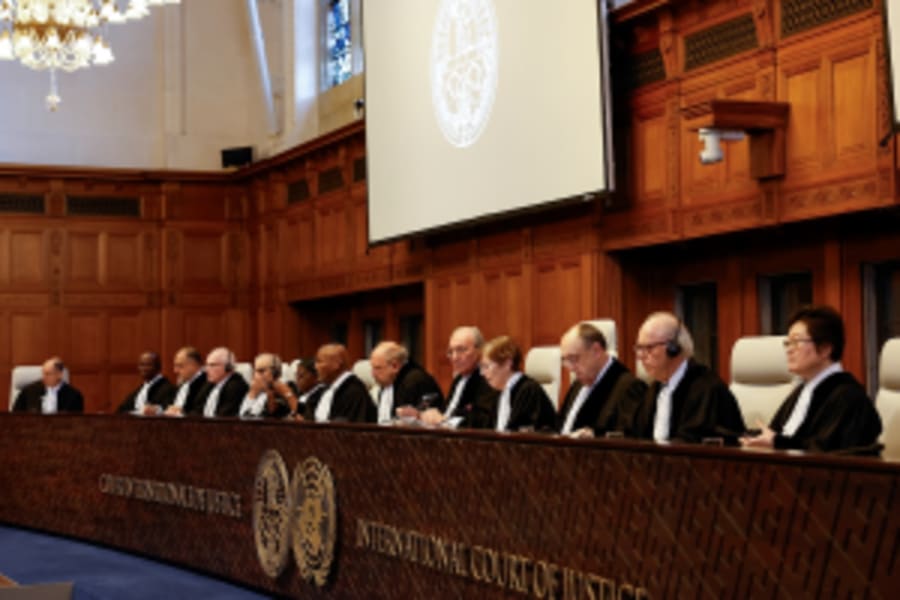Purim in Iran showcases the dire situation of Iranian Jews

This Purim weekend, a holiday celebrated by Jews all over the world, the story of Purim has, once again, been turned upside down, as Iranian Jews are accused of "slaughtering Iranians" in the ancient story.
The festival of Purim, as told in the Book of Esther, celebrates the survival of the Jews in ancient Persia, after Haman, the king’s advisor, plots to annihilate them all.
However, in the Iranian regime, Jews are accused of having committed “genocide” against the Iranians of ancient times. There are approximately 10,000 Jewish people who still live under the Islamic regime.
One Iranian social media user posted an infographic claiming that “Esther, a Jewish lover of King Achashverosh, exploited the king’s state of inebriation to pass a decision to commit genocide against all non-Jews, and once Iranians heard that – they escaped to the mountains and outside the cities to find asylum.”
The infographic claims that following this decision, 75,000 Iranians were murdered, and that Jews celebrate the slaughter with food and wine made with the blood of Iranians.
An Israeli expert on Iran, Dr. Thamar Elam Gindin of Haifa University explained the blood libel.
“Like every Purim, this year too, Iranian antisemitic social media users repeat the Iranian version of the Esther story, and the tomb of Esther and Mordechai in Hamedan is under attack. Their story is based on the Book of Esther and some verses in the Quran that refer to Jews as liars. This allows them freedom to tell the story based much on imagination,” Gindin said.
“The story as told on the web is, mainly, that Esther and Mordechai killed 77,000 Iranians, which is the first genocide in history, and since then Jews celebrate Purim, whose other name is ’the holiday of killing Iranians’ (Jashn-e Iranikoshi) and eat symbolic body parts of Iranians (reference to Hamantaschen, named in Hebrew “Haman's ears”) originally baked with the blood of little Iranian children,” she added.
In December 2021, an Iranian parliament leader, Zohreh Lajevardi, echoed the false accusation.
“The Zionist regime is the sworn enemy of Iran and Iranians, and this enmity, without any connection to the ruling regime in Iran, has a long history, so that the Zionists still celebrate Purim every year on the anniversary of the brutal massacre of the Iranian people,” said Lajevard.
According to Jewish tradition, the heroes of the Book of Esther – Queen Esther and Mordechai – are believed to be buried at a tomb in the Iranian city of Hamadan.
The tomb is a sacred site for Jews in Iran and has served as a place of Jewish pilgrimage. In recent years, however, it has suffered vandalism and other forms of desecration, including arson and demonstrations with Hezbollah flags and “Death to Israel” slogans.
This year, a Palestinian flag was found hanging at the entrance to the tomb. It was discovered by the chief rabbi of Iran.
In October, just two weeks after the Oct. 7 massacre, when an estimated 3,000 Hamas terrorists invaded southern Israel and slaughtered at least 1,200 people, Iranian regime supporters burned the Israeli flag at the tomb.
“Religious extremists in Iran burn the Israeli flag inside of Esther & Mordechai’s tomb in Hamedan. This is the first time such an event has taken place within the grounds of the tomb, a sacred site for Iranian Jews,” wrote Alireza Nader, a U.S. expert on Iran. She posted a video of the vandalism on 𝕏.
Prior to 1948, approximately 145,000 Jews lived in Iran. The Jewish community that remains in Iran today suffers both popular and institutional antisemitism and reportedly keeps a low profile to escape prosecution by the Islamic regime.

The All Israel News Staff is a team of journalists in Israel.














